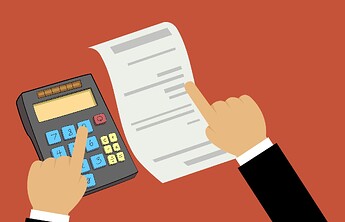We need ’em, folks!
This step depends largely on whether your practice will be cash-based, medical aid-based, or both. Most practices function with a combination of the two. This makes it very important that you register with medical aids – otherwise, you will not get paid! If you’ve signed up with a practice management bureau to help manage your practice then you can ask them to assist with this step.
So…how do we as healthcare practitioners relate to Medical Aids?
As a healthcare provider, it is important to remember that you have a relationship with the patient, not their medical aid. You are not providing a service to the medical aid but to the patient. This should always take priority and your treatments should always be in the best interest of the patient.
Submitting claims on behalf of your patients is an added service offered by most GPs and many specialists, and is widely appreciated (and often assumed) by patients. Some practices, however, prefer to have their patients pay them on the day and then claim from their medical aid themselves. Although this might seem like an easier option, it could affect your ‘business’ if there is another practice close by that makes their patients’ lives that much easier by submitting their claims. Submitting claims yourself can also give a bit of extra time for you to make sure you submit all the relevant codes for the consultation.
This brings us to the next point. Every claim submitted to a medical aid needs to include the following (besides the patient details):
- ICD 10 diagnostic code(s)
- There are many apps and websites where you can look up ICD 10 codes, even Google!
- Consultation code(s)
- Once you have registered with a medical aid you can usually find the list of consultation codes on their website or ask them to send it to you via email.
- Procedure code(s)
- This code is to indicate any specific procedures that were done. This can include anything from blood drawn to surgery.
- You can also find the list of procedure codes from a medical aid you have registered with.
- Material code(s)
- This is for all material used during your consultation (including medicines) and/or procedures. For example, if you sutured a wound then you submit the codes for the local anaesthetic, suturing material, sterile tray, sterile gloves, dressing material, tetanus vaccine where applicable, etc.
- You can also find these codes from a medical aid.
You would surely have noticed by now that submitting claims can get quite complicated, whether done by the patient or by you. If it is done by the patient, then the invoice to be submitted must include all the above codes. If it is submitted by you, you will likely have the assistance of whatever practice management or billing software you are using (see step 9).
The Council for Medical Schemes acts as an intermediary between all the medical schemes in South Africa and the Department of Health. For a list of all the medical schemes registered in South Africa, click here.
![]() Please contribute to this conversation by replying to this topic.
Please contribute to this conversation by replying to this topic.
